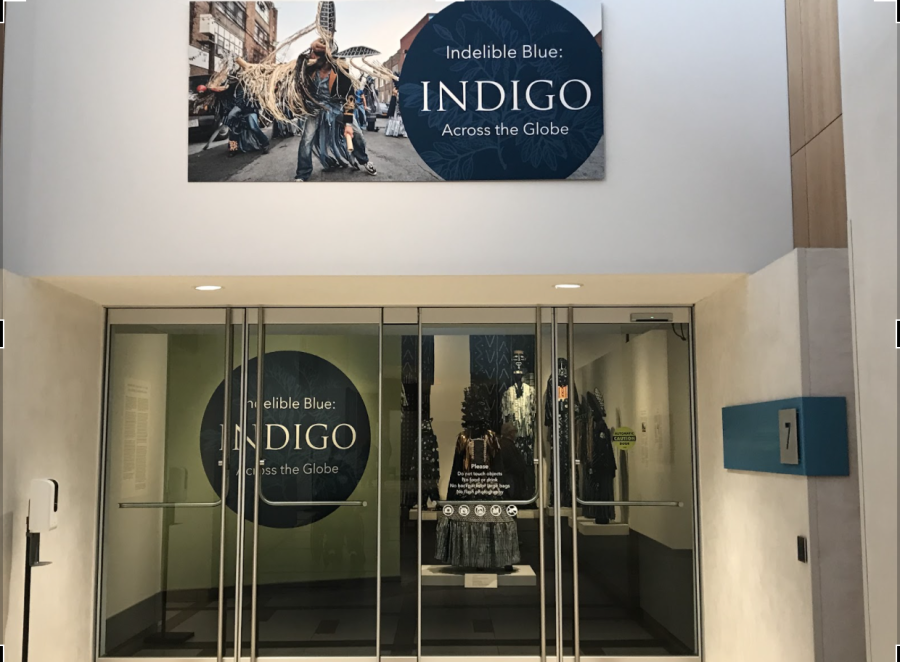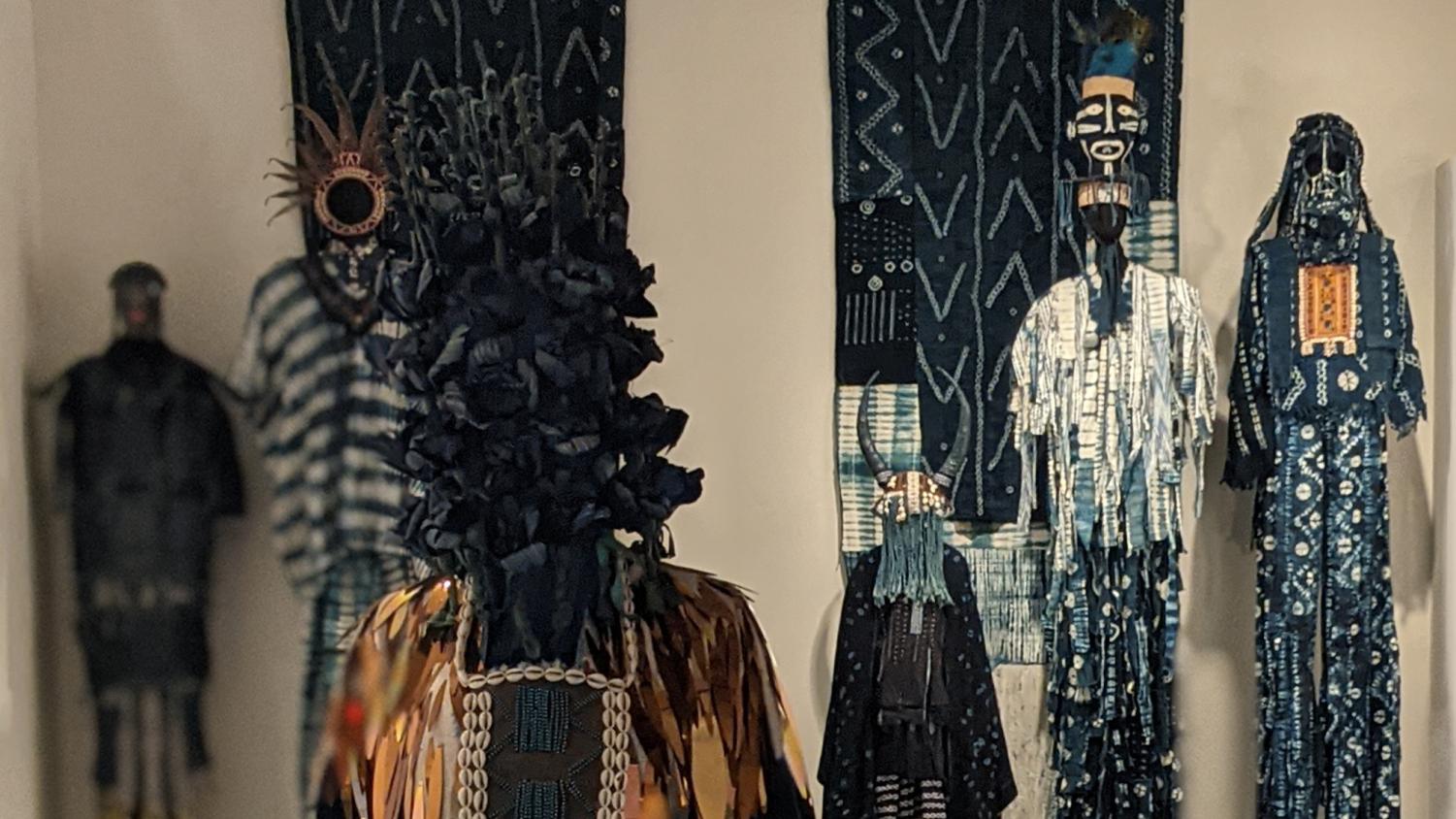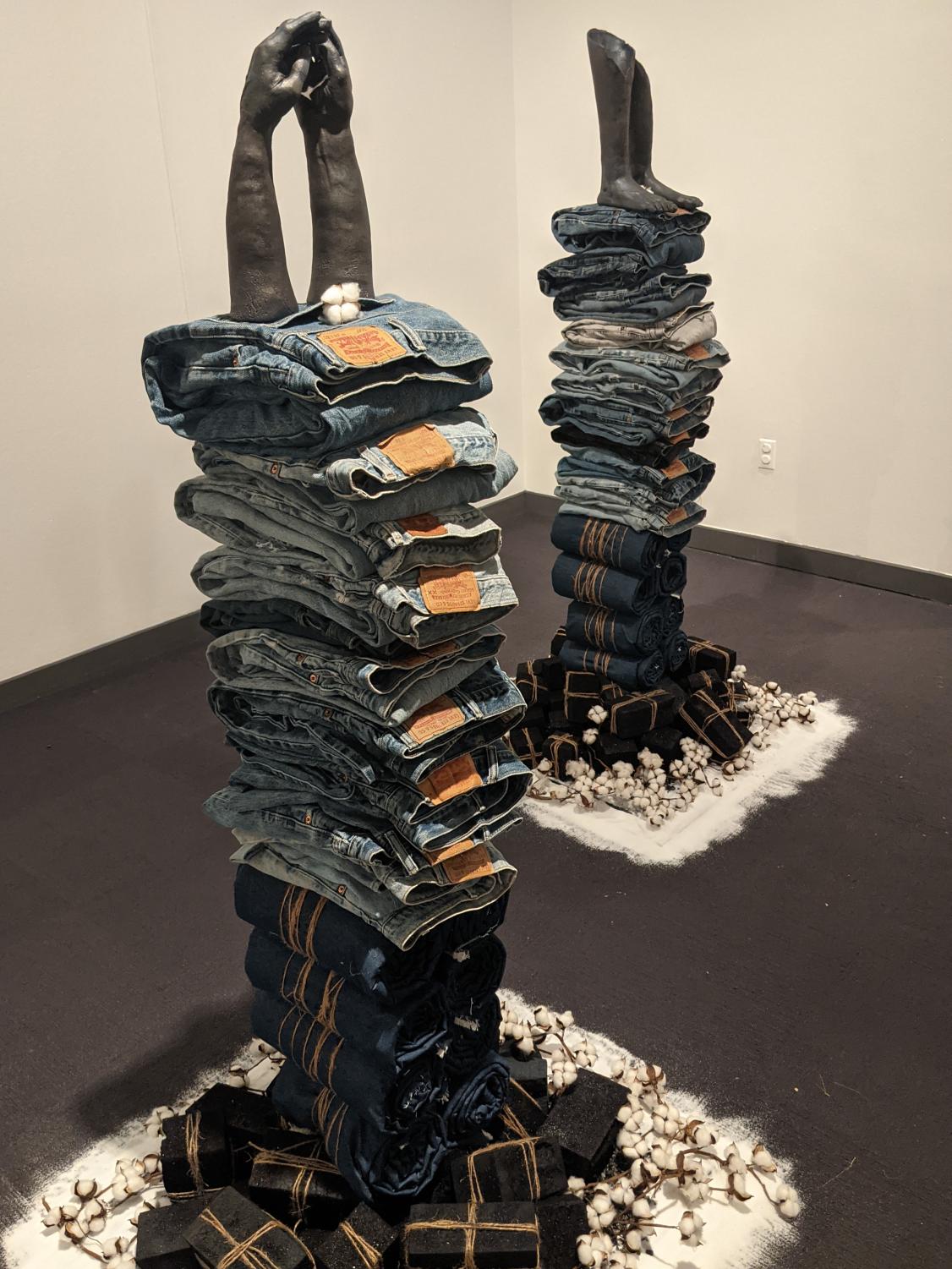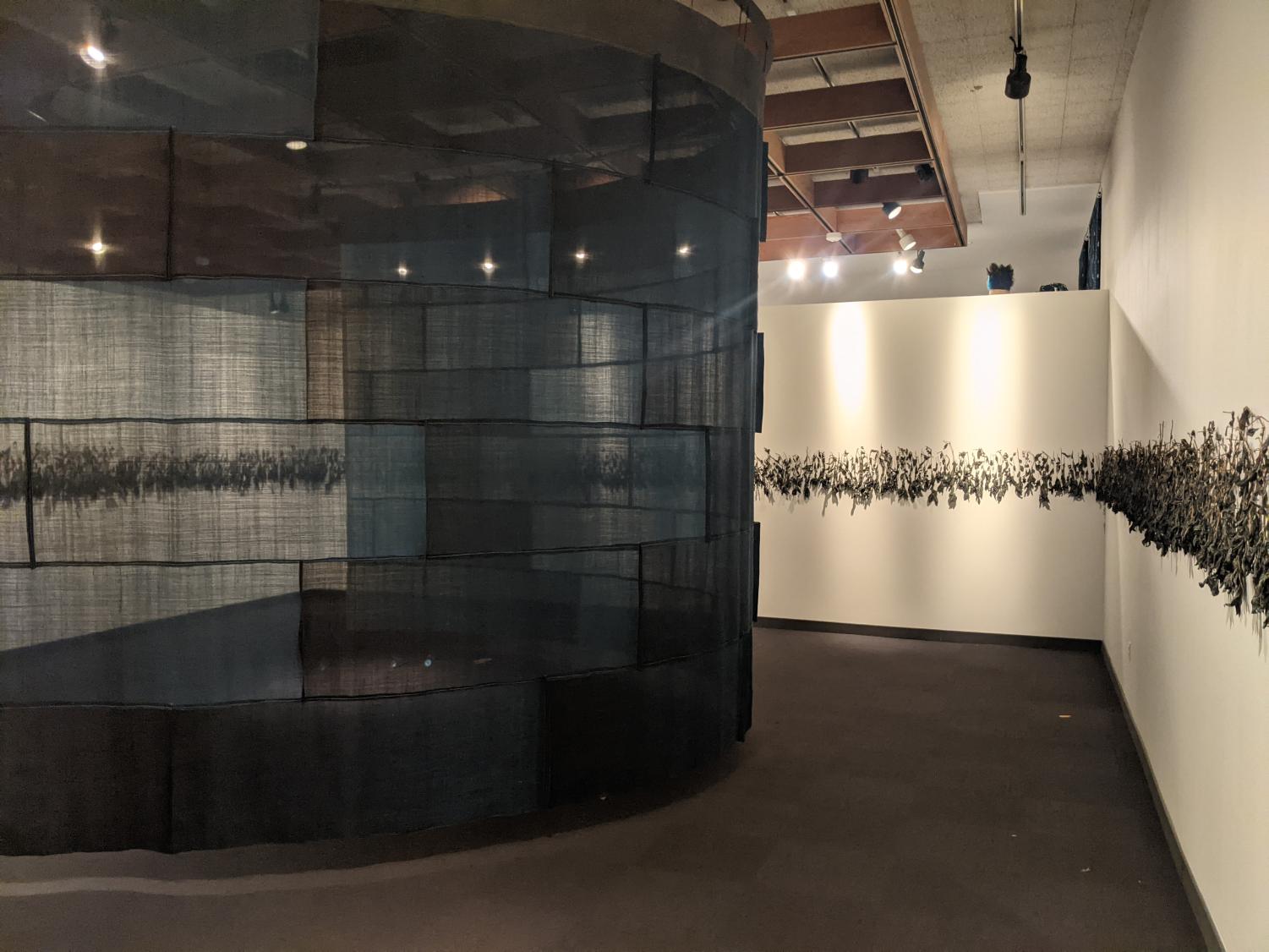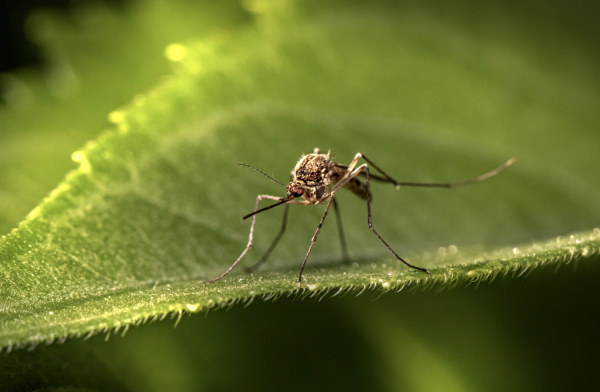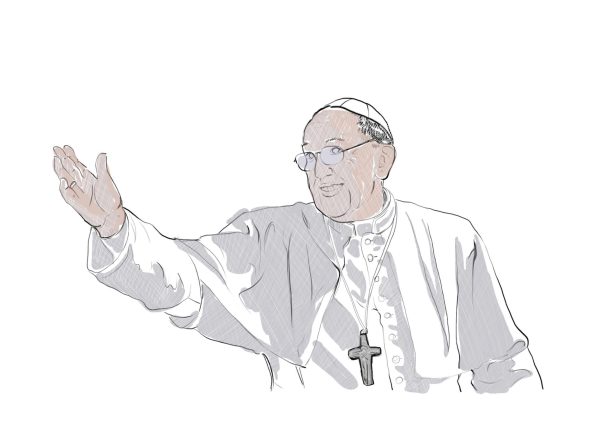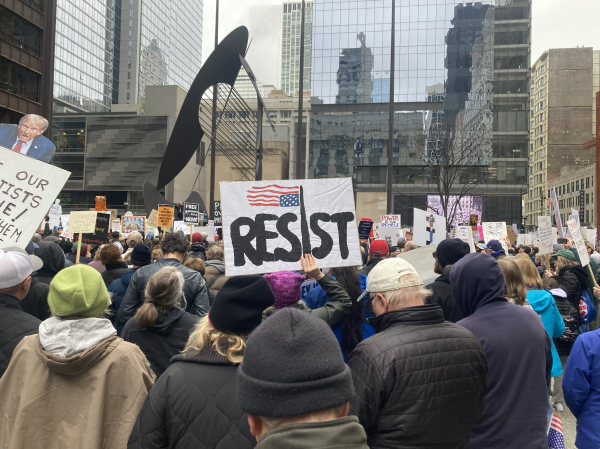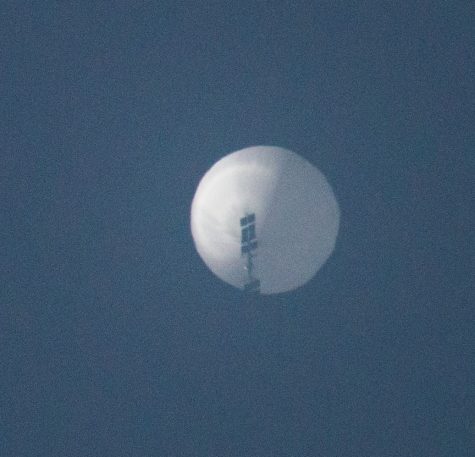Indelible Blue Exhibit: A Review
An adventure and history lesson awaits when you delve into this indigo exhibit.
I recently had the pleasure of visiting the Albuquerque Museum’s newest exhibit, Indelible Blue: Indigo Across The Globe. This compact yet fascinating exhibition follows, as the name suggests, the global production, use, and significance of the highly prized blue dye, Indigo, throughout history. Highly prized for millennia Indigo has been ingrained into cultures worldwide becoming a symbol of status and oftentimes spirituality as well as fueling some of history’s greatest injustices and conflicts from India to America. To visit is truly an eye-opening experience, from the most intricate handcrafted pieces to insightful historical artifacts to contemporary, full-sensory, installations — all united by dazzling shades of blue.
Curated by former AA history teacher, Leslie Kim, the exhibit takes the viewer from Brooklyn to the heart of India to the far coasts of Japan and all the way back to our own New Mexico, “Indelible Blue” presents a powerful message of unity as it endeavors to show the cross-cultural significance of Indigo worldwide. One of the most compelling displays are the costumes used in the Intervención: Indigo project. Orchestrated by Laura Anderson Barbata, the project strives to show the cross-cultural significance of indigo, drawing inspiration from many different traditional styles for its designs and speaking out against racially motivated violence from police and society at large in Brooklyn and the world. From stunning stilts to intricate headdresses and even some chilling imagery. Part of the project’s mission, in fact, was to speak out against racial injustices past and present with the costumes reflecting Native American spiritual garments and incorporating pieces of modified police uniforms to protest police violence. Indeed, even the location of the event was significant in that the downtown area of Brooklyn in which it took place is known for high levels of racially motivated police violence. This installation is truly a sight to behold. Located directly in the entrance, it’s a tough act to follow but I assure you the full exhibit does not disappoint.
From there a visitor can move through exhibits detailing the specific importance of Indigo in different world cultures including Japan, India, North and South Africa, and China, before reaching the incredible Mobile Section installation designed by the artistic mind of Rowland Ricketts. Truly a fascinating installation it is by far one of the most memorable portions of the exhibit featuring a large hand-dyed arc of blue sectioned fabric hung from the ceiling in a horizontal arch, the enclosing walls lined with dried indigo plants, and in the center plays a nonrepeating collection of sounds, all associated with indigo (from crinkling leaves to audio recordings of the process used to make the valuable dye) which change based on the movement and position of those within the space.
Continuing through the exhibit, guests will confront the powerful imagery of Nikesha Breeze’s Red, White, Black, and Blue: an Homage to African American indigo. This installation invokes a more solemn tone as it pays respects to the many thousands of African Americans forced to work on Indigo plantations that played a large part in the early American economy. Consisting of two five-foot-tall stacks of folded blue jeans adorned with cotton plant branches and flowers. One is topped with a sculpted black pair of hands and the other with a similar pair of feet. I found this grim and powerful imagery to be particularly inspiring, bringing an entirely new level of understanding of the consequence and importance of a substance whose name had only ever reminded me of history books.
Approaching the final leg of Indelible Blue attentive observers may also catch a glimpse of a seemingly insignificant but equally fascinating piece. Yukiyo Kawano’s Flexible Container bags shows the true versatility of Indigo by using the rich blue substances as paint for a depiction of blue radiation containment bags used to collect toxic debris following the bombings of Hiroshima and Nagasaki. A truly dedicated piece of artwork, it is painted on long strips of handmade paper and spans a small section of the exhibit wall.
Finally, the exhibit concludes with an informational wall detailing the various Indigo plants as well as the technicalities and evolution of the process by which the valuable dye is extracted. Connecting all other elements provides a fitting conclusion to such an experiential journey.
The exhibit will remain open to the public at the Albuquerque Museum through April 28. To say the experience of visiting Indelible Blue is eye-opening would be an understatement. Seeing the rich history and culture shared amongst all people through something seemingly so insignificant as Indigo will change how you see the world through color, culture, heritage, and history.


